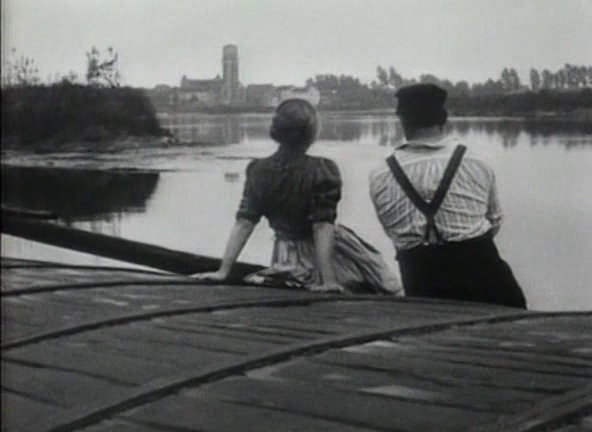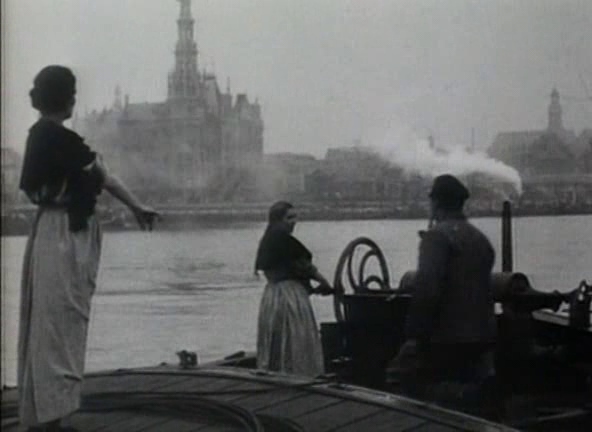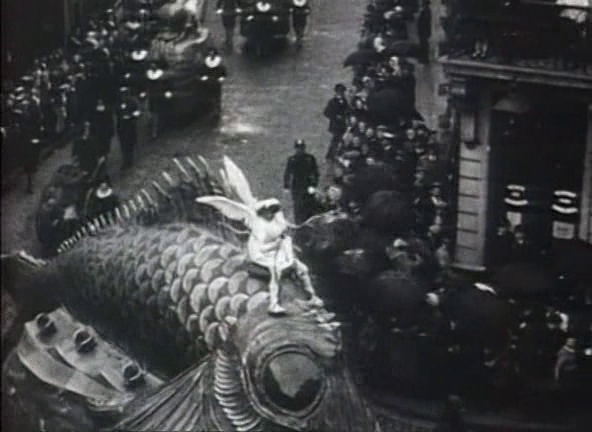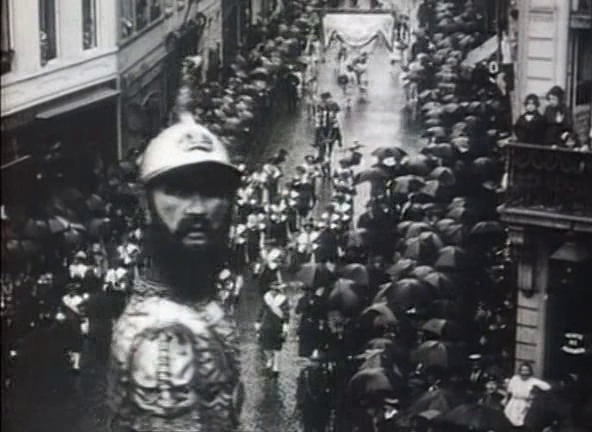 André Antoine e il Theatre Libre.
André Antoine e il Theatre Libre.
La nostra storia del teatro di regia prosegue con l’inevitabile sosta nei pressi del celebre Theatre Libre di André Antoine. La parabola di questo grande regista e attore teatrale (e anche cinematografico) francese è un ottimo esempio delle personalità e delle idee caratteristiche del teatro di regia. André Antoine si avvicinò al teatro da autodidatta e da dilettante, creando con il suo Theatre Libre una alternativa al mercato teatrale. La sua esperienza è uno dei tanti inizi della storia della regia teatrale, così come lo è stata quella della compagnia dei Meininger.
André Antoine nacque il 31 gennaio del 1858 a Limonges, era figlio di operai e quando a otto anni si trasferì a Parigi con la famiglia, dovette iniziare a lavorare per aiutare i genitori e i fratelli minori. Fece il galoppino per un agente di cambio, lavorò presso un’importante libreria dove placò la sua sete di cultura e fu impiegato in una società del gas.
Frequenta assiduamente il mondo del teatro, soprattutto assiste agli spettacoli della Comédie-Française dove riesce ad entrare a far parte della claque e occasionalmente riesce a fare qualche comparsa. Inizia quindi ad apprendere l’arte teatrale osservando e divorando con gli occhi la recitazione dei grandi attori di quei palcoscenici. Non compie alcun tipo di studio regolare, frequenta qualche corso serale di dizione, tenta ad entrare al Conservatoire ma viene respinto.
Nel 1879 parte per il servizio militare e torna alla vita civile nel 1883 e divenne socio di un circolo teatrale di dilettanti, il Circolo Gaulois. Finalmente viene messo nelle condizioni di attuare il suo processo di riforma teatrale all’insegna delle idee del naturalismo che si erano già imposte nella letteratura grazie a Zola. Lo stesso Zola nel 1881 aveva scritto Il naturalismo a teatro in cui aveva espresso proprio la necessità di allargare il naturalismo anche al teatro.
André Antoine fece proprio questo. Deciso a dare battaglia al teatro contemporaneo francese e a ringiovanire il repertorio, prese in affitto il teatrino del Circolo Gaulois, lo ribattezzò Theatre Libre, portò sul palcoscenico gran parte del mobilio di casa sua per risparmiare, consumò lo stipendio di un mese e fece mille franchi di debiti per presentare il suo primo spettacolo la sera del 30 marzo 1887. Questa è una delle date fondamentali per il nostro percorso. Le opere presentate furono: Mademoiselle Ponte di Duranty, La Cocarde di Jules Vidale, Un Prefet di Arthur Byl e Jacques Damour, una riduzione di una novella di Zola. Quest’ultima opera ebbe molto successo e attirò l’attenzione della vita intellettuale parigina.
La riforma di Antoine si basava su quattro punti fondamentali:
1 – Modernizzare il repertorio secondo le nuove esigenze del pubblico.
2 – Rinnovare le sale, troppo scomode e insicure.
3 – Abbassare il prezzo del biglietto.
4 – Reagire al predominio del grande attore, creando compagnie di complesso.
La messa in scena doveva ovviamente seguire i principi del naturalismo:
1 – Scena tridimensionale praticabile in opposizione al fondale dipinto.
2 – Illuminazione il più naturale possibile. Grazie all’elettricità i proiettori potevano essere posti in modo che la luce entrasse dalle porte e dalle finestre, come nella realtà.
3 – Uso della quarta parete. Gli attori non si rivolgono più al pubblico, ma l’uno all’altro. Recitano come se al posto del arco scenico ci fosse un’altra parete e come se il pubblico non esistesse. Lo spettatore deve assistere all’azione come se essa si stesse svolgendo davvero nella vita e come se l’attore non sapesse di essere visto.
Una grande innovazione è costituita poi dalla nuova figura dell’attore che viene usato da André Antoine. Non è più l’attore professionista con i suoi capricci e smanie di protagonismo, ma un attore dilettante, un appassionato del palcoscenico che vivono di altre professioni. Il teatro non è un lavoro ma una passione. Questi attori non lavorano per se stessi, ma inseriti in un gruppo e si impegnano per esso.
Gli attori possono girare le spalle al pubblico e oltre a recitare con la voce e il volto usano anche le mani, i piedi e la schiena. Secondo Antoine l’attore deve perdersi nel personaggio, deve immedesimarsi a tal punto da dimenticare se stesso e calarsi a piedi giunti nella parte. Antoine considera l’attore come una marionetta nelle mani del regista. L’attore è come uno strumento musicale nelle mani del suo esecutore, il regista, che è l’unico incaricato di fare da ponte tra l’opera letteraria e il risultato scenico.
Ogni coefficiente teatrale (attore, luci, scenografia, musica…) è una parte che deve funzionare ben inserita nel tutto. Non c’è un elemento predominante sugli altri, nemmeno l’attore. Lo spettacolo di Antoine segue il disegno organico (leggi l’articolo sull’organicità nel teatro di regia) del regista, in virtù del rispetto della coerenza dell’opera letteraria.
André Antoine è quindi uno dei primi registi della storia della regia teatrale.
Il Theatre Libre durò appena nove anni, dal 1887 al 1896. La sua attività fu molto intensa però: 62 spettacoli, che comprendevano 124 lavori nuovi di 114 autori, di cui 69 erano debuttanti. Grazie ad Antoine vennero recitati per la prima volta in Francia autori stranieri come Bjørnson, Hauptmann, Ibsen, Poe, Strindberg, Tolstoj, Turgenev, Verga.
Come è evidente l’esperienza del Theatre Libre non fu importante solo dal punto di vista dell’arte drammatica, ma anche della letteratura drammatica.
http://lacasastregata.blogspot.it/2009/04/andre-antoine-e-il-theatre-libre.html
Go with the flow… L’hirondelle et la mésange (1920)
 André Antoine was so successful in injecting realism into this film that it was refused distribution by a producer who no doubt didn’t consider it entertaining enough. We should expect no less from the director of La Terre (1921) and who took not only Emile Zola’s naturalism as his guide but, through his extensive theatrical work, the approaches of Ibsen, Strindberg and even Charles Dickens for whom environment was as key a part of personal journeys as free will.
André Antoine was so successful in injecting realism into this film that it was refused distribution by a producer who no doubt didn’t consider it entertaining enough. We should expect no less from the director of La Terre (1921) and who took not only Emile Zola’s naturalism as his guide but, through his extensive theatrical work, the approaches of Ibsen, Strindberg and even Charles Dickens for whom environment was as key a part of personal journeys as free will.
No stage sets, extensive location work and a rhythm built around the working lives of the protagonists set the context for a drama that emerges only gradually through the routine to explode in a flurry of desperate violence at the end.
This is a film to savour and one that took over 60 years to “complete”… the six hours of rushes lying in storage until finally edited together in 1984 by Henri Colpi with the help of the director’s original notes. The result feels very modern and the contamination of contemporary editorial sensibilities aside, that’s no different from La Terre. Antoine had his way of work and also seems to have been as restless creatively as he was precise, leaving cinema as he had film to focus on writing in 1924.
Why not? He’d already mastered neo-realism and Dogma – insert smiley face – but the mixture of water-slow pacing, travelogue and the most undramatic treatment of a dramatic storyline combine to deliver a narrative that is engaging. It’s a slow-release concoction that plays on the characters’ confinement on board the barges… it’s L’Atalante without the romance and the whimsy.
Well, there is some romance but it’s not open-hearted but conniving and manipulative and inappropriately-aggressive.
Pierre Van Groot (Louis Ravet) is the captain of two barges, L’Hirondelle and La Mésange (The Swallow and The Titmouse)which he uses to transport building goods from the port of Antwerp into Northern France. He does a side-line in smuggling including diamonds and lace to bolster cash flow. The former are hidden below the waterline, strapped to one of the rudders whilst the silk is tightly wound around his wife, Griet (Jane Maylianes). Griet’s sister, Marthe (Maguy Deliac) lives and works with them.
At the port in Antwerp, a young man Michel (Pierre Alcover) spots Pierre in deep discussion with a local jeweller. He follows his every move and ends up working with Pierre as a pilot… Pierre likes the fact that he has sailing experience whilst Marthe his youthful twinkle but Griet has her suspicions…
Pierre joins in the rhythms of the family’s life and soon proves his worth earning the trust of Pierre if not his wife whilst young Marthe begins to hero worship. It’s a simple story which passes by a slowly as the buildings and trees on the bankside…but you’re pulled in all the same. We know Pierre’s a wrong ‘un but we begin to forget as he seems so helpful but the cuckoo won’t share the nest forever.
Before departure from port, we catch a glimpse of Antwerp’s Ommegang Festival. There is a giant fish pulled by horses dressed in fish scales and with a cupid sat on top, spraying the cheering crowds in honour of a whale that swam up Scheldt River to be greeted warmly by the local fishermen. Then there are legends such as the giant Druon Antigoon who had his hand chopped off by local hero Brabo and who here towers over his carriers. The ceremony originated in the 14th century and was, at the time, run only every 25 years: a delightful slice of bizarre Belgium life.

 From Antwerp they head up river to Tamise (the French name for Temse) where the railway bridge still survives. They disembark for some sightseeing and shopping offering a fascinating view of the fish market. Michel makes his move for Marthe and there’s a terrifically tense picnic on the deck as Marthe glows, Michel looks shifty, Griet appraises and Pierre is oblivious. All four characters are so well defined and played – defined almost instantly by director and performer.
From Antwerp they head up river to Tamise (the French name for Temse) where the railway bridge still survives. They disembark for some sightseeing and shopping offering a fascinating view of the fish market. Michel makes his move for Marthe and there’s a terrifically tense picnic on the deck as Marthe glows, Michel looks shifty, Griet appraises and Pierre is oblivious. All four characters are so well defined and played – defined almost instantly by director and performer.
Antoine had many years of theatre direction and clearly knew how to get the best out of his actors even when they were not so experienced: without checking I’ve no idea which of the cast was the least experienced so well do they play.
The two couples attend a funfair and there is a precious sequence in which they go to have their photographs taken using a variety of popular props, a horse and cart and an airplane. These shots do indeed feel candid as if the performance veneer fell away when faced with photo formalities. But we know the type of poses as some of us are lucky enough to have our grand and great-grand parents in similar shots: on their best behaviour addressing the new world behind the lens.
They travel on towards Ghent and there is an accident when Michel hurts his hand when lowering one of the barge’s sails, Marthe rushes to bind the wound: did he do this deliberately? He eyes Marthe up and down and clearly has eyes for the elder sister. He sneaks over the boats at dusk and catches sight of Marthe wrapping herself in the lace she bought in Antwerp; the camera lingers and there’s something sensuous about this smuggling…
Pierre and Marthe head off to shore leaving Marthe and Michel alone, he takes plunge in the hold but she pushes him away in disgust: if she didn’t know before she does now.
As they approach the French border… Marthe tells all she knows to Pierre – Michel is not the man he thought he could trust. They make their way past customs but as Michel invites his captain to get drunk at Kruydewier’s Bar will he succeed in his patient robbery… Antoine handles the drama with the same ease as the documentary and pastoral leaving an ending that is all the more impactful for its simplicity. Like everything else we’ve seen; it is believable.
I watched a video copy of the 1980s restoration which comes with a wistful improvised score on accordion from Marc Perrone. I’m not aware of this being on DVD but it is surely ripe for broader rediscovery and screening – so many superb riverside views. A gem and one of 1920’s best sans doubt!
http://ithankyouarthur.blogspot.it/2015/10/go-with-flow-lhirondelle-et-la-mesange.html
